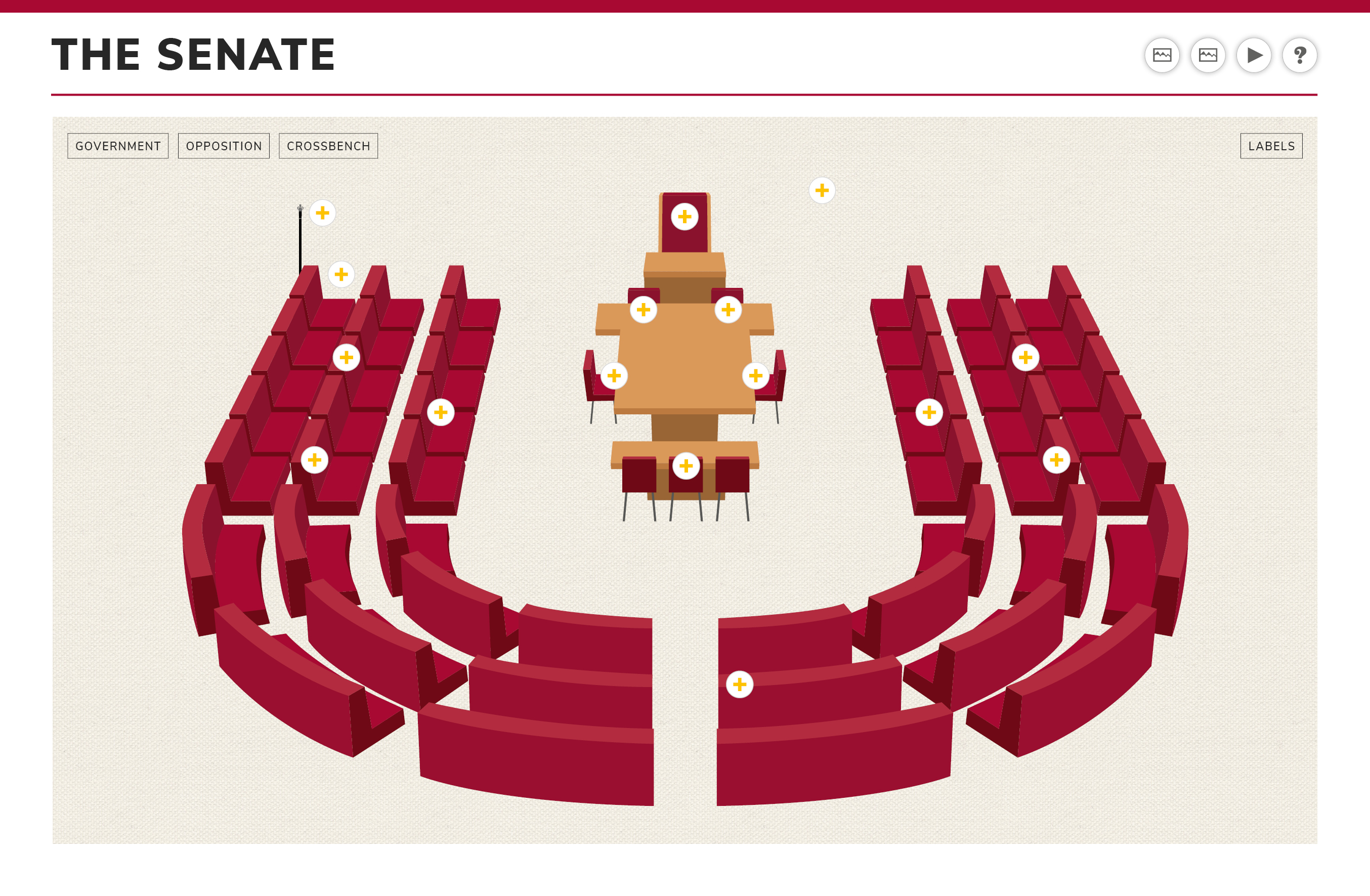The Senate
Discover the people who work in the Senate with this interactive poster. Highlight the groupings of senators and test yourself on who sits where. Use the teaching notes and activities to support your students' learning.
Teaching notes and activities
Curriculum links
Year 6: ACHASSK143; ACHASSK146
Year 7: ACHCK048
Year 9: ACHCK075
Before you begin
Read the Australian Parliament fact sheet, which explores the structure and key functions of the Australian Parliament.
Then read the Senate fact sheet, which includes information about the role, appearance and history of the Senate and the Black Rod fact sheet, which will help you to answer your students’ questions about the function, design and history of the Black Rod, an important symbol in the Senate.
Getting started
These discussion starters are listed from easier to more complex. Choose the ones that work best for your class.
- What do you notice about the Senate by looking at the interactive poster?
- Compare the House of Representatives and the Senate posters. What similarities can you see? What differences?
- Although government is formed in the House of Representatives, there are also members of the government in the Senate. Compare the size of the government, opposition and crossbench in the Senate and the House of Representatives. If the government doesn’t have a majority in the Senate, how do they get their bills passed or win votes on other issues?
- Hansard editors produce a written record of what is said in Parliament. Why do you think this is done. What might be the consequences if a record was not kept?
Activities
Senate traditions research activity
- In groups, ask students to find out:
- why the Senate is red and the House of Representatives is green
- where the names of our houses come from.
- Assign each group to research either the United States Senate or the British House of Lords.
- Students create a diagram, such as a Venn diagram, to illustrate the similarities and differences between the house they researched and the Australian Senate.
- Discuss the diagrams as a class. There are many similarities because Australia was inspired by both the United States and Britain at Federation. Do students think any of the differences identified would be beneficial to have in Australia? Which ones, and why?
Reflection
After looking at the interactive poster and completing some of the activities, discuss these questions with your class:
- Senators represent their state or territory. The Australian Constitution says every state gets an equal number of senators. Why do you think this decision was made? Which colonies (that became states) do you think would have wanted equal representation the most? Do you think it is fair for the Australian Capital Territory and the Northern Territory to only have 2 senators each?
- At Federation, it was predicted by some that senators would work as members of political parties rather than as representatives of states. Do you think this prediction turned out to be true? In your opinion, is it possible to work as both?
